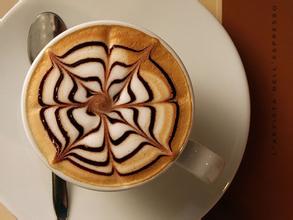The basic knowledge of Coffee Culture Coffee Story you don't know

Coffee won't melt when it's thrown into the water. The maximum extraction rate of roasted coffee beans is 30% (substances that can be dissolved in water divided by the total weight of coffee).
1. Whether it's French pressure, Philharmonic pressure, all kinds of pressure, or espresso. The range of the best extraction rate is 18% Mui 21%. Insufficient extraction (less than 18%) means that the flavor of coffee is not fully dissolved in water, and excessive extraction (more than 21%) means that the miscellaneous flavor of coffee is integrated into the water.
Baristas rack their brains to make the perfect cup of coffee, all based on this.
two。 It is surprising that all our instant coffee can be dissolved in water. It shows that instant coffee has been extracted and reduced to powder in some chemical way. Exactly how to do it is outside the scope of discussion here.
Coffee is actually part of the fruit. Since it is necessary to bake coffee, in a sense (not absolutely), coffee has changed from fruit to dried fruit.
1. The plum we sometimes drink, the citrus is actually its predecessor, combined with the flavor of the fruit in the local environment; the almond and walnut flavor we drink is partially carbonized after baking. We drink cocoa (a bitter taste) and syrup (a combination of bitterness and sweetness) is a deeply baked, carbonized taste.
two。 For one thing, we understand why coffee is popular for roasting. Like steak, the outside is charred and tender inside, there is cocoa and dried fruit flavor brought by carbonization on the outside, and the inside still retains the sweet and sour fruit. The taste is richer in this way.
3. Many people tirelessly pursue a certain flavor of the theory of taste. But it ignores the rules of flavor wheel arrangement. From bottom to top, it is actually a gradual distribution of the degree of carbonization. At the bottom, it is smoked and scorched, and at the top is the fragrance of flowers.
4. Most importantly, coffee is not just bitter. At least that's not the case with good coffee.
The third grinder is the process of turning coffee beans into powder.
1. The finer the grinding, the more coffee is exposed to the air surface and the faster the volatilization time is. Espresso requires the finest powder, once ground into powder, most of the flavor will be lost in 2 minutes.
two。 Why wouldn't I recommend a hand grinder to make espresso. Because it takes far more than 2 minutes to shake 20g powder by hand.
3. If the powder particles are inconsistent, the same hot water passes through small particles, too much extraction (more surface of exposed water), and not enough extraction after large particles (less surface of exposed water)
4. The filter bowl of the pressure kettle is very thick, so it is required to grind large particles. Therefore, the requirement of the grinder is high, because if the size is different, there will not only be the third problem, small particles will wear a filter, such as coffee turbidity.
Fourth, no matter what kind of drink, the taste that is suitable for the public will often be balanced. In coffee, it mainly reflects the ups and downs.
1. Bitterness and bitterness can be felt by normal people. If you calm down, you can feel these three smells.
two。 The sour taste is more sensitive on both sides of the tongue coating, the sweet taste is at the tip of the tongue, and the bitter taste is at the root of the tongue. Due to the shadow of bad coffee in the past. Many friends try black coffee for the first time, just want to taste it, as soon as they drink it sour, it is easy to give up.
Coffee actually requires a big sip to quickly cover the taste buds.
3. Normal people with unbalanced taste can judge coffee with a little guidance (this has been confirmed many times in my personal experience).
4. Some people say that if you drink 1000 cups of coffee, you will know how to taste it. In fact, a good cup of coffee with the right guidance is enough.
Important Notice :
前街咖啡 FrontStreet Coffee has moved to new addredd:
FrontStreet Coffee Address: 315,Donghua East Road,GuangZhou
Tel:020 38364473
- Prev

Common sense of Coffee the basic environmental conditions of planting coffee trees
Coffee belt: coffee can not be grown in any environment, because it is originally a plant growing in a tropical rain forest, and in phylogeny, it forms the habit of requiring calm wind, cool, shaded or semi-shaded and humid environment. We call the strips on both sides of the equator between latitudes 25 degrees south and north suitable for the growth of coffee trees as coffee belts. Temperature: the requirement for temperature varies with the species of cultivation, small
- Next

Basic knowledge of Coffee answers to six Coffee questions
Q: should I store the coffee beans in the refrigerator after they are opened? How to save it? Answer: as long as it is sealed in a cool place at room temperature. Coffee is not recommended to be put in the refrigerator. If you put it in the refrigerator and take it in and out when you want to drink it, the fresh-keeping temperature of the coffee is unstable, which leads to the faster loss of smell, not to mention that coffee has the function of deodorizing. This has become a deodorant.
Related
- Beginners will see the "Coffee pull flower" guide!
- What is the difference between ice blog purified milk and ordinary milk coffee?
- Why is the Philippines the largest producer of crops in Liberia?
- For coffee extraction, should the fine powder be retained?
- How does extracted espresso fill pressed powder? How much strength does it take to press the powder?
- How to make jasmine cold extract coffee? Is the jasmine + latte good?
- Will this little toy really make the coffee taste better? How does Lily Drip affect coffee extraction?
- Will the action of slapping the filter cup also affect coffee extraction?
- What's the difference between powder-to-water ratio and powder-to-liquid ratio?
- What is the Ethiopian local species? What does it have to do with Heirloom native species?

